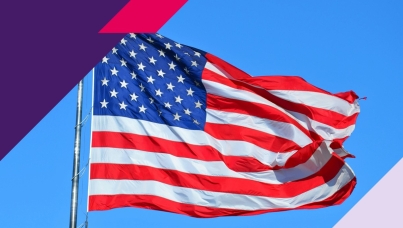Digital Delivers: Building Your Brand Online
In the past year, Ipsos ASI has evaluated over 100 digital communications using Ipsos ASI's holistic 360 tools. What have we learned in that time? And what questions should you as a marketer ask yourself when assessing your digital and online advertising strategies?
Before starting, let's review some of the "conventional wisdom" the industry has about digital advertising:
- Digital is fundamentally different from traditional media: it reaches different consumers than other media, and should be considered and managed separately
- Banner ads are tactical--they can't succeed at driving equity
- Digital facilitates "dialogue" and interaction with your brand's consumers
- Digital makes it too easy to overwhelm and annoy your brand's consumers
- Digital cannot be considered successful unless it "goes viral"
Clearly, there is some confusion in the industry over what to believe. Here are some key findings from Ipsos ASI's database to support--and sometimes refute--some of this "conventional wisdom":
Our experience indicates that the audience for digital communication is rarely mutually exclusive of offline audiences. In fact, the overlap is quite high. The most successful campaigns tend to leverage a consistent and integrated creative approach across all points of contact (a.k.a., touchpoints).
Case in point, a children's personal care product's campaign used a consistent character and consistent colors across many of the touchpoints. The Brand*Graph 360 results indicated that the website was one of the stronger marketing elements in contributing to equity among brand users.
In addition, Ipsos ASI has seen that "online" touchpoints can be more effective when they are supported by "offline" ones. For example, including a website address on TV, in-store, and in print, or by including the web address on distributed samples helps enable contact.
Our experience shows that all types of digital communication can successfully contribute to all levels of the consumer purchase funnel--and the most successful campaigns assign a clear strategic objective to each touchpoint (including digital). Online ads can help generate awareness for a new brand and can be used to tease or entice consumers to find out more information at a website.
From our Brand*Graph 360 findings, websites and online banner ads contribute a similar average share of overall campaign impact*, when noticed by consumers. This proves that banners can succeed at contributing to strategic as well as tactical objectives. Websites do have higher maximum potential to contribute to impact than banners, possibly reflecting their superior ability to engage consumers in relevant interactivity.
*Impact is defined as the campaign's main persuasion success metric, which could include consideration, purchase interest, equity, or other measures of in market success.
Websites in particular can facilitate dialogue with consumers and have a powerful impact on familiarity, purchase interest, and equity--but only when consumers find the sites! Another challenge is to provide consumers with compelling reasons to visit once they are aware that the site exists.
While visitation to a brand's website has been as high as 20% among the cases Ipsos ASI has evaluated, the average is under 5%.
In the case of an over-the-counter medication, our evaluation showed over 20% of the campaign target were aware of the website (a good level)--but fewer than half of those aware had visited. An opportunity existed here because website visitation was the highest of all measured touchpoints on impacting equity for the brand.
Online banner ads in particular face a special challenge: intercepting consumer targets while they are potentially engaged in an active "search" mode, and seeking out content.
The best examples of banner advertising Ipsos ASI evaluated achieved visibility as high as 30% (better than some TV ads!)--but more often individual banner ads fail to get noticed by significant portions of the population. This appears to be consistent with industry consensus that banners can be viewed as intrusive or annoying, or they can be ignored all together!
Banners that best succeed do so by communicating relevant news or surprising content about the brand, with an easy to understand call to action.
Our research for a household product brand showed online banners had great impact when noticed, but visibility was low for individual banners. Net visibility for all banners was better - but still low relative to other elements in the campaign and when compared to the best banners Ipsos ASI has evaluated.
More on the point about annoying consumers with digital ads: it is worth noting that none of the dozens of campaigns assessed by ASI's 360 tools contained any mobile touchpoints. Some other research fielded by Ipsos ASI in 2007 suggests that consumers remain reluctant to accept ads on their mobile devices, and skeptical about other forms of advertising in the digital space as well. Well over half of respondents indicated they were not receptive to advertising on websites or on mobile phones.
Ipsos ASI's experience to date confirms the challenge of succeeding with viral communication. In our 50+ Brand*Graph 360s evaluated to date, we have not observed many viral components, and none made any noteworthy contribution to the overall result.
Digital media presents exciting and challenging opportunities to extend brand communication--if you are prepared! Unless you are a direct response marketer with an entirely online strategy, the best practice is to integrate your digital communications within your campaign to leverage its unique capabilities to engage consumers with your brand.
What should you be asking yourself when assessing digital touchpoints?
The first step is to have a deep understanding of the moments and mindsets when consumers are most receptive to your brand's message. When considering digital components, ask yourself:
- Have you set up clear goals for the different elements by strategic orientation and target? Digital media should be evaluated relative to its contribution to the campaign overall, and not just in isolation. It is also worth considering whether digital can be used to strategically extend reach beyond that of traditional media targets.
Are you leveraging your other online and offline communications to tell your consumers about your websites? Are your websites engaging enough? Consumers are on the web seeking information about the brands they use, but more often than not they are not going to the brands' own websites. Surprisingly, the number one reason cited is that consumers did not know about the site.
Once consumers know about your site, they need a reason to come back. The best websites combine elements of education and entertaining interactivity, they make it easy for consumers to find what they want and to "dialogue" with the brand when they want to - but also to exercise some control over how much and how often.
Do your online ads provide consumers enough incentive to interact with them? Consumers have to choose to engage with the interactive content in order for it to be effective - so are you sure your online content is relevant, newsworthy, or surprising enough? Is your online message clear enough?
Ipsos ASI's beliefs about digital's role in a multi-touchpoint campaign --confirmed by our 360 analysis experience--are:
- Digital can be an integral part of a campaign - and can "work" to contribute to strategic as well as tactical objectives.
- However, digital (like other touchpoints) can work in different ways, for different objectives, and for different targets.
- What matters the most is how digital, with the help and support of other elements, contributes to your brand objectives and how all touchpoints are influencing your consumers.
This is why all elements need to be assessed versus alternative use of the campaign spend, and also why elements should be assessed holistically! Your brand has many touchpoints--a holistic assessment will provide the best picture of where your brand sits.



